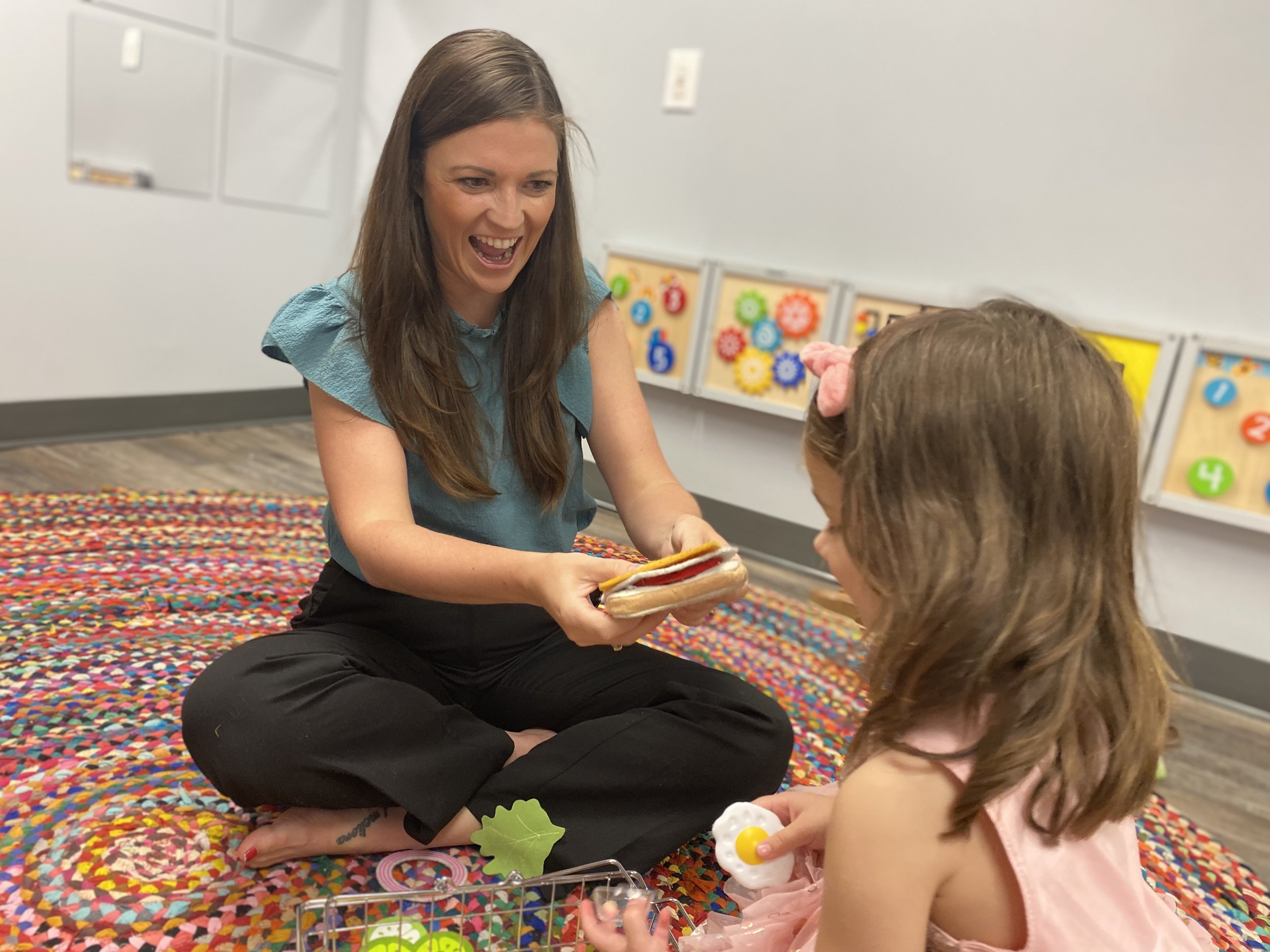Rethinking Reinforcement: A Professional Guide
Behaviour Analyst playing with a child
Reinforcement Is More Than Stickers!
At Elemenoe, we believe that learning and behaviour support should be compassionate, empowering, and collaborative. Reinforcement is a powerful tool in Applied Behaviour Analysis (ABA), but it’s often misunderstood. Many people picture sticker charts or token economies, but the best reinforcement is much more than that. When used thoughtfully, reinforcement strengthens skills in a way that respects a child’s autonomy, motivation, and joy in learning.
Reinforcement Done Right: Insights from ABA Research
Some of our favourite researchers inform our practices! Dr. Francesca degli Espinosa’s research highlights the importance of functional communication as a reinforcer itself. As clinicians, we often see this in early language acquisition where mands, or requests, are one of the first vocabulary words for children with developmental delays. When children learn that their communication has power, their motivation to engage increases. Reinforcement should foster independence and confidence, not just compliance. This means we should teach them to tell us “no!” or “stop!” while also teaching them to say “hi” and “yogurt”. The reinforcement for these types of requests is either the removal of something aversive or the addition of something positive - this reinforcement shows the child the power of communication and increases the likelihood they will communicate that way in the future!
Dr. Greg Hanley reminds us that reinforcement should be individualized and meaningful. In his work on practical functional assessment and skill-based treatment, he emphasizes the importance of identifying what is truly motivating for each child—rather than relying on generic rewards. As clinicians, it’s easy to fall into the trap of assuming something is reinforcing simply because it's fun. Who doesn’t love bubbles, right? But just because an activity is enjoyable doesn’t mean it functions as reinforcement. True reinforcement increases the likelihood of a behaviour occurring again—not just providing a moment of enjoyment.
Dr. Dave Palmer emphasizes the role of natural reinforcement—those everyday, meaningful experiences that make life enjoyable. Learning should be shaped in ways that mirror real-world success rather than relying solely on artificial rewards (though, sometimes these are necessary to kickstart the skill!). As clinicians, it’s easy to fall into the trap of overusing token systems or external rewards, thinking they are necessary for progress and/or forgetting to fade them out. Sticker charts might work in the short term, but if a child only completes a task because they’re working toward a prize, we may be missing an opportunity to connect learning to natural, intrinsic motivators. The goal is to help learners find reinforcement in the activity itself—whether it’s the joy of mastering a skill, the satisfaction of social connection, or the independence that comes with new abilities. Remember, as skills are established, it is our job to fade out artificial reinforcement and move back to the naturally occurring reinforcement in the environment when possible.
Dr. R. Douglas Greer’s work in verbal behaviour development reminds us that reinforcement should be about more than just getting a child to perform a task—it should promote a love for learning, problem-solving, and social engagement. As clinicians, it’s easy to fall into the trap of reinforcing only task completion rather than the learning process itself. A child might mand (request) for a break simply to access a preferred activity, but if we don’t reinforce their engagement in problem-solving or social interaction along the way, we risk teaching them that learning is just a means to an end. Instead, reinforcement should be embedded in experiences that build curiosity, persistence, and a genuine desire to communicate and connect.
Practical Tips for Effective Reinforcement
Identify What Truly Motivates the Child
Conduct preference assessments regularly. Interests change, and reinforcement should evolve accordingly.
Observe natural interactions to determine what the child enjoys in daily life.
As you are teaching, take note of if the skill is improving. If it is not, you likely haven’t found something truly reinforcing
Use Natural and Social Reinforcers
Reinforce communication with meaningful responses (e.g., giving a requested item, engaging in a preferred activity).
Encourage social praise that is genuine and connected to the child’s experience.
Embed praise within natural play and learning opportunities.
Ensure Reinforcement is Contingent and Immediate
Reinforce the behaviour you want to see more of immediately after it occurs (we mean it! Reinforcement should be within a few seconds of the behaviour!)
Be specific in your praise or feedback (e.g., “I love how you asked for help!” rather than just “Good job!”).
Fade Artificial Reinforcers Over Time
If using token systems or tangible reinforcers, have a clear plan for fading them.
Gradually increase the response effort before reinforcement is delivered.
Shift reinforcement to more natural contingencies, such as peer approval, increased independence, or intrinsic motivation.
Make Learning Joyful
Reinforcement should support a love for learning and engagement, not just task completion.
Consider how reinforcement can make activities enjoyable rather than feeling like a demand.
Ensure reinforcement aligns with the child’s developmental and emotional needs.
Collaborate with Families and Caregivers
Discuss reinforcement strategies with families to ensure consistency across environments.
Teach parents how to use natural reinforcement to strengthen skills at home and in the community.
By shifting the focus from artificial reinforcement to meaningful, natural, and socially embedded reinforcement strategies, professionals can create learning experiences that are truly rewarding and sustainable. Reinforcement isn’t just about motivating a child in the moment, it’s about fostering long-term engagement, independence, and a love for learning. Let’s reinforce in ways that matter!

